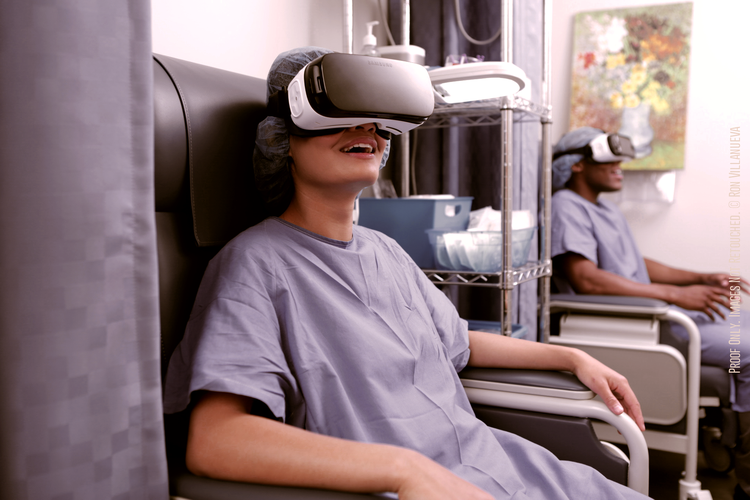
Editor’s Note: This post is sponsored by Samsung.
The global market for Virtual Reality (VR) in healthcare is projected to reach $3.8 billion by 2020 driven by technology advancements in healthcare IT, which would undoubtedly expand its use into more diverse applications and medical disciplines while also increasing the demand for rehabilitation and simulation VR-training in hospitals and clinics. VR technology continues to gain ground and visibility as a potential diagnostic tool in the form of fully immersive 3D-simulation in the treatment of phobias, autism, post-traumatic stress disorder (PTSD), depression, anxiety and severe pain cases.
Cedars-Sinai Partners with Samsung for Virtual Reality Pilot
In the past year, Cedars-Sinai Medical Center launched a pilot study with devices from Samsung that aimed at easing the stress of patients staying in the hospital. The purpose of this pilot was to test virtual reality scenarios with Cedars-Sinai patients to determine if they enjoyed VR experiences while waiting for procedures or even throughout their hospital stay as an alternative for pain relief. Researchers were interested in learning whether these experiences would reduce patients’ pain and anxiety or improve overall satisfaction with care.
One such area of patient stress is in the surroundings itself. For some patients, hospitals are known to be very sterile, uncomfortable or sometimes down right frightening. The pilot tested if VR technology would help ease some of this location stress.
It is also a thought that virtual reality could be very useful for women enduring long labors and or having to wait an extensive period of time for other lengthy or painful procedures such as episiotomy. Researchers also want to determine if the therapy would produce greater health benefits, such as lowering blood pressure, improving depression and reducing patients’ pain scores.
The study at Cedars-Sinai utilized the new Samsung Gear VR headset to display the virtual reality experiences. Patients were able to watch up to four virtual reality applications, each lasting from two to five minutes, with a max of 20 minutes simulation time.
Some of the VR applications took patients on trips to include a helicopter trip over Iceland topography and landscapes, an art studio where patients could create paintings and an underwater voyage where users could swim with the dolphins and other sea creatures. After patients viewed the VR application, doctors then analyzed the results and interviewed the patients to see if and how the VR experience improved the patients’ hospital experience or recovery process.
Researchers tested the virtual reality system on about 70 patients. Many say it helped relieve stress and anxiety. Younger patients have been most willing to test the system, but it’s older patients who appear to be most amazed by it and reap the biggest benefit due to the positive effects on Alzheimer’s.
By utilizing VR technology in hospitals, we can significantly improve the quality and experience patients have during their stay, but also decrease the cost of care by reducing the number of resources needed or the amount a time a patient would stay at the hospital. The end result in conjunction with virtual reality is to improve the overall healthcare experience using the latest in mobile technology.
For more content like this, follow Samsung on Insights, Twitter, LinkedIn, YouTube and SlideShare.
References
https://techcrunch.com/2015/09/16/virtual-reality-in-healthcare-wheres-the-innovation/
http://www.medicaldaily.com/pulse/virtual-reality-childbirth-samsung-headset-allows-father-see-wife-have-baby-boy-4000-325862
Samsung Gear powered by Oculus
Super AMOLED display, wide field of view, precise head tracking and low latency
Light (318 g) with a large touchpad
